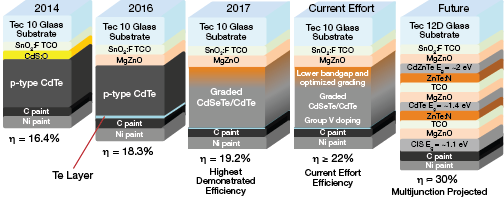Catalyzing Commercialization: Unlocking the Power of RNA Interference for Insect Pest Management
In recent decades, insects have become more resistant to pesticides. As resistance becomes more widespread, the agricultural biotechnology sector has sought viable alternatives to curtail the huge economic losses associated with insect pests. One of these alternative approaches, called RNA interference (RNAi), could be used to kill pests by silencing genes that are critical for their survival.
Learn MoreCatalyzing Commercialization: Solar Paper Powers Internet-of-Things Devices
Today’s solar cells are mainly used for large-scale power production. However, the up-and-coming internet of things (IoT) will require many sensors and devices to transmit information wirelessly to computer networks and mobile personal electronics. Those sensors and devices could be powered with solar cells that harvest energy from either freely available sunlight or indoor lighting, provided the solar cells are small, inexpensive, lightweight, and able to conform and adhere to surfaces with any shape or texture.
Learn MoreCatalyzing Commercialization: An Economically Viable Process to Recover High-Value Products from Red Mud
Aluminum (Al) possesses many desirable properties: a high strength-to-weight ratio, corrosion resistance, thermal conductivity, and ductility. Over the past five decades, Al and its alloys have been used extensively for automotive, construction, electrical, and chemical applications. The growing demand for Al is met with an increase in demand for bauxite, a native ore for primary Al production.
Learn MoreCatalyzing Commercialization: Novel Palladium-Graphene Catalysts Improve Pharmaceutical Processing
Pharmaceutical companies use a variety of metal catalysts to produce active pharmaceutical ingredients (APIs). One of the most widely used catalytic reactions in commercial operation is the Suzuki cross-coupling reaction, which can produce high-volume drugs such as the anti-hypertension drug losartan. These reactions traditionally employ homogeneous palladium catalysts, which often require extensive purification to separate the catalyst from the product.
Learn MoreCatalyzing Commercialization: Next-Generation Photovoltaics for Economic, Clean Energy
Energy sustainability represents one of the grand challenges facing modern society, and thin-film solar photovoltaics provide one of the best opportunities for rapidly expanding renewable energy use. Photovoltaics (PV) using the thin-film semiconductor cadmium telluride (CdTe) have been commercialized at the gigawatts (GW)-per-year scale, with 17.5 GWs installed globally.
Learn More



